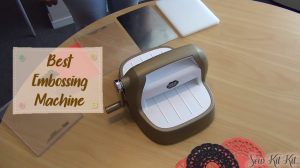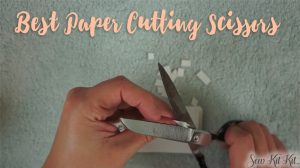Last Updated on January 10, 2023
Don’t want to toss a favorite shirt that is worn out? Stained your new cloth with bleach? Revitalize your faded or tainted fabrics with an effective fabric dye and use it again. This article is to introduce you to some of the best fabric dyes on the market and to let you know the things you should keep in mind before going to the store.
When you buy through links on our site, we may earn an affiliate commission. As an Amazon Associate I earn from qualifying purchases.
Here are some of the best fabric dyes on the market, of different forms and different dyeing methods. Read and compare which will be best for your need.
The 5 Best Fabric Dyes
| Image | Title | Buy |
|---|---|---|
 Top
Top | Rit DyeMore Liquid Dye, Graphite | Check Price! |
 Top
Top | Tulip One-Step Tie-Dye Kit Super Big 12 Colors | Check Price! |
 Top
Top | Rit All-Purpose Liquid Dye, Denim Blue | Check Price! |
 Top
Top | Rit Dye Liquid Fabric Dye, Black 8 oz (Pack of 3) | Check Price! |
 Top
Top | Rit, Dark Green Purpose Powder Dye, 1-1/8 oz | Check Price! |
1.Rit Dye More Advanced Liquid Dye
- Dye synthetic fabric and fabric blends, which include anything with 35% or more polyester, acrylic, acetate or nylon. Perfect for rejuvenating faded clothing, upcycling, hiding laundry accidents and so much more
- With 250+ color recipes available on Rit’s website, it is almost certain you’ll find the right color for your needs
- Get creative and create something unique with an easy dye technique, like an ombré, dip dyed, shibori or tie-dye pattern
- Due to the complexity of dyeing synthetic fabrics, you must use this dye in a stainless steel pot on your stove top to maintain a high water temperature throughout the duration of dyeing. Cannot be used in a washing machine
- If dyeing fabric with less than 35% synthetic fabric (i. e. polyester, acrylic or acetate), use Rit All-Purpose Dye instead
Great way to cover up the permanent stain, spot, to hide a print you don’t like or to darken fabric colour. You can also tie-dye with it very easily.
Synthetic or synthetic hybrid, cotton-polyester blend or pure polyester can be dyed with it. You can dye a lot of items like a shirt, bedspread, mats, carpet, curtain, sweater and so on. But you can’t use it in your washing machine or in a bucket.
Use the stovetop method for dying your fabric so that you can maintain a constant temperature through the whole process. And don’t forget to clean the fabric so that there is no finish to intervene in the bonding of dye with the fibre.
With the proper procedure, it will give you a very rich and consistent colour. The colour doesn’t bleed when you will wash it after dying and holds up through regular washing.
The amount in the direction is enough for giving you the desired color. You may need 30-40 minutes to complete the process. There is the limited colour choice. You should buy two different colours if you want to get a different or lighter shade.
2. Tulip One-Step Tie-Dye
- Kit includes enough tie-dye supplies for 4 people
- Features 12 easy-squeeze bottles of highly-concentrated nontoxic One-Step dyes in popular colors – just add water to activate
- No need to presoak fabrics in soda ash before dyeing
- Includes step-by-step technique guide featuring over 8 tie-dye looks to choose from
- Dyes are safe to machine wash – colors stay bright and bold through repeated washings
- Use with 100% natural fiber fabrics like cotton, rayon and wool for best results
- Perfect for small parties, family fun and other group activit
A straight forward process to make a fun dye project. Even the mistakes will come out good! Enough dye for a good price. If you have plenty of items to tie-dye, it is suitable for you. Otherwise, the dye will go to waste. You will get more or less 20 well-dyed adult medium t-shirts with it. Use the dye sparingly as you actually don’t need a lot of dye to complete a shirt.
There are enough colours to choose from. You can mix them together to get muted and secondary colours which are not seen usually on tie-dye clothing.
Bright on 100% natural fiber fabrics like cotton, ramie, wool, etc. Very vibrant colors with no bleeding. Easy to use as you don’t need to pre-soak your fabric in soda ash. Just add water and dye it! Each bottle of dye should be mixed with cold water for bright, vibrant colors, and hot water for more pastel and muted colors.
Use the dye very soon after adding water or it will lose its vibrancy. The dyed clothes should be washed separately twice before going through the wash with other clothes. You should do the process outside otherwise it may not come off easily from the stone, tile or vinyl. Use drop cloth, the included one is pretty small.
And don’t forget to use gloves to avoid stain in hand. The included gloves are cheap plastic. Get extra rubber bands also.
3. Rit Dye Liquid Fabric Dye
- Deliver vibrant color to almost any type of fabric or fabric blend, including cotton, linen, silk, wool, rayon, ramie or nylon. This dye can even color wood, wicker, paper and cork
- Perfect for rejuvenating faded clothing, changing the color of apparel, shoes or accessories, coordinating home décor, hiding laundry accidents and so much more
- Get creative and create something unique with an easy dye technique, like an ombré, dip dyed, marbled, shibori or tie-dye pattern
- With 1,000+ color recipes available on Rit’s website, it is almost certain you’ll find the right color for your needs
- If dyeing fabric with 35% or more polyester, acrylic or acetate, use Rit DyeMore Synthetic Fiber Dye inst
An economical product with an easy method to work with. Comes as the liquid which has made it easier than mixing the powders so a beginner will also get the expected result following the instructions.
Works best in natural, washable fabrics such as 100% cotton, linen, silk, wool, ramie, etc., gives accurate and even colors. Works also on synthetics like nylon and rayon. Fibre blends will also tint but won’t achieve expected colour. Natural materials like wood, wicker, paper, feathers, corks can also be dyed.
100% synthetic fabrics, acetate, spandex, water repellent or bleach damaged fabric, fabric with rubber backing or labelled dry clean only can’t be dyed with it.
Enough amount of dye. And cloth soaked up the dye very fast. If you clean your washing machine, container or sink immediately after use with hot water and chlorine bleach, the dye will not stain.
Doesn’t ruin other clothes in the wash, doesn’t bleed. But it will be better to wash the items separately after dying. Do the procedure outside to minimize the risk of staining your tile or floor. And don’t forget to wear hand gloves.
4. Rit Dye Liquid Fabric Dye
- Black liquid dye.
- Pre-dissolved liquid dye is also great as a stain for unfinished wood and wicker. Works on silk and dried floral, nylon and plastic and even golf balls.
- Dye for clothing, accessories and even furnitu
A cheaper solution for your faded or stained clothes to freshen them up nicely. You don’t have to worry if you have never done this before. It is as easy as mixing liquid dye with water and dying it.
Works on silk, nylon, plastic, accessories, furniture, couch cover, etc. Add 1 cup salt with natural fibers. Polyester or acrylic blends dye lighter. Not for 100% polyester, acrylic, fabric with a special finish, rubber backing, fabrics which are labeled dry clean or cold water wash.
You can use a bucket or washing machine to dye your item. It will stain plastic, fibreglass or porcelain tub, washing machine. To avoid it clean them immediately after use with hot water, detergent and chlorine bleach. Use bucket if you want to avoid the hassle of cleaning your washing machine.
Wash the items separately after dying to avoid any risk of bleeding on other clothes. It doesn’t rub off on your skin or other clothes after it is washed. It can irritate your eyes so use carefully. The dye will not rub off on your skin or other clothes once you wash it separately.
Give you solid, unyielding black. To get a darker color, you can double the quantity. The less dye you will use, the lighter the color will be. Leave your items in the dye bath for several hours to get a brand new look.
If you want to change or lighten the color of your fabric, you can use dye remover. It is recommended by the manufacturer not to use the dye directly on your fabric.
5. Rit All Purpose Powder Dye
- Deliver vibrant color to almost any type of fabric or fabric blend, including cotton, linen, silk, wool, rayon, ramie or nylon. This dye can even color wood, wicker, paper and cork
- Perfect for rejuvenating faded clothing, changing the color of apparel, shoes or accessories, coordinating home décor, hiding laundry accidents and so much more
- Get creative and create something unique with an easy dye technique, like an ice dye, dip dyed, marbled, shibori or tie-dye pattern
- With 500+ color recipes available on Rit’s website, it is almost certain you’ll find the right color for your needs
- If dyeing fabric with 35% or more polyester, acrylic or acetate, use Rit DyeMore Synthetic Fiber Dye inst
A versatile product and inexpensive way to personalize your faded, stained, torn garments, carpets, accessories, to dye on wood, wicker, paper, cork, to do home and wedding decoration and so on. Gives a very bright colour and can lighten bleach stain. Others will not even tell you where the stain or bleach was.
Works on almost all types of fabric or fabric blend including cotton, linen, silk, wool, rayon, ramie, nylon, etc. The color will be different depending on what you are trying to dye. On the favorable fabrics or items, it will give nice rich and even color. The dye is non-toxic so you can include your children in your dyeing project.
Adding more hot water makes the color lighter and using more dye will make the color darker. The color can be fade over time for repeated washings. But it retains without bleeding after several washes. Some customers have claimed about the color, probably they have not got the expected color for using the dye on a fabric that is not suitable for it.
One box will dye one or two regular size garments like lightweight shirts, sweaters, or a pair of pants or shorts. Buy more than one box if you want to dye more items. The amount of dye can be less to you for the price.
Can use it with a washing machine, plastic bucket, stainless steel sink. The stain or residue that the dye leaves can easily be removed by using hot water and bleach. Completely dissolve it to avoid spots on the clothes from the little chunks of powder. You can remove existing colors using Rit’s color remover.
What is a Fabric Dye?
Fabric dyes are natural or synthetic substances dissolved in a liquid or blended with other components which deliver color to fibers, yarns, fabrics, and some other materials.
The dyes are embedded in the fibers by chemical reaction. They need corrosive agents to increase the fastness of dying. The dyes are soaked or diffused into the fibers.
They are soluble in water, light, and colorfast so it doesn’t fade through washing and sunlight or heat.
Natural dyes are generally derived from roots, berries, barks, leaves, woods, fungi, lichens, etc. Synthetic dyes are made from petrochemicals.
Different dyes have different aptitudes for respective fabrics. The method of application is also different. Some mostly used dyes names are- acid dyes, natural dyes, synthetic dyes, all-purpose dyes, direct dyes, disperse dyes, basic dyes, fiber reactive dyes, vat dyes, etc.
How do Fabric dyes work?
The dyeing procedure is completed in a solution that contains dye substances (powder or liquid form) and other chemicals which help the fabric accept the dye fast.
The fabric is cleaned first so that any object may not intervene in the process of absorbing the dye. Then the fabric is soaked in water. After that, the wet fabric is submerged in that solution for a certain period of time to let the dye molecules be fixed to the fibres. A high temperature is maintained throughout the process.
If the process is done in the tub or bucket, it is filled with hot water. If the stovetop method is followed, continuous high heat is given to maintain a consistent temperature throughout the process.
The hot water relaxes the fabric so that it can absorb the dye well. And submerging in the dye bath for a long time helps the dye bond with the fibre. Using more water naturally, give a lighter colour. And using more dye ensures a darker colour.
Natural fibres such as cotton, silk, ramie accept dye better than synthetic fibres. For cotton and linen, adding salt to the solution will help it to take the dye. For wool or silk, white vinegar does this work.
Using colour stay dye fixatives for natural fibres improves the colour and minimizes colour running onto other fabrics.
Stirring continuously during the dye bath ensures an even dying. After keeping the fabric in the dye bath for 30-40 minutes or even more will let the fabric take the dye. Then rinsing it with cold water will remove any finish of the dye completely and set the dye with the fibres.
How to Choose the Best Fabric Dye
Choosing the best dye among different brands and their numerous products can be seemed difficult naturally. But if you research a little, consider your fabric and your demands, the list will be very short.
If you ask which will be the best dye for you, it will not be possible to say. Because all dyes are not for all fabric types. There are many dyes that will not impart dyes to some fabrics at the least. So at first consider which fabric you are using. On all the dyes you will find the manufacturer’s instruction on which fabric or material they work best and where they will not work at all.
Here I am discussing some of the most used dyes for your convenience-
Acid Dyes
Acid dyes are especially for protein fibres such as silk, wool, nylon, acid dyeable acrylics, etc. They come as a concentrated powder which is used in very hot water. It is colourfast and needs acetic acid and synthrapol (for wash) for producing the most vibrant colours.
All-Purpose Dyes
These dyes work on almost all fabric and fabric blends. Comes in powder and liquid form and you can use it in your washer to avoid a mess. They are versatile if you need to work with more fabric types at once, but they will give you less vibrant colours.
They are also less colourfast. So if you want brilliant colours and if the fabrics or materials are regularly washed, you would better opt for a specific purpose dye. This dye only needs salt to fix the dye onto the fibres.
Fibre Reactive Dyes
Unlike all-purpose dyes, these are super colourfast. They are for natural fibres like cotton, linen, ramie, viscose cotton, etc. They can work on fabrics at room temperature.
They need soda ash(to bond the dyes), salt(to fix them), and synthrapol( at first for removing any finishes or dirt from the fibre and excess dye).
Direct Dyes
For natural fibres like cotton, linen, silk, wool, rayon, etc. Comes in the dissolvable packet which is mixed with hot water or tossed in the washing machine. For achieving brilliant colour and avoiding color bleeding, salt (for plant fibres) or vinegar (for protein fibre) is used. These dyes are less colourfast than acid and fibre reactive dyes.
Disperse Dyes
For synthetic fibers only (polyester, nylon, etc.). These dyes also come as dissolvable packets. Require a very hot temperature through the process. Comes in limited colors. For a brilliant color, you have to use a color intensifier. They are less colorfast but you can minimize color bleeding using dye fixatives. Less lightfast than fiber reactive dyes. Inexpensive than the other dyes.
Basic Dyes
Basic dyes are applied to substrates that have anionic characters. They are mainly for acrylic fibres. They are not water-soluble but can be made soluble treating with alcohol. These dyes are normally used with a mordant to set dyes on fabrics. They work as bases and actually they are aniline dyes. Basic dyes are also used for cotton, linen, acetate, nylon, polyesters, etc. But it does not work best for them.
Vat Dyes
Vat dyes are chemical dyes that work on cellulose fibers using a redox reaction. They are insoluble in water. The process is somewhat difficult than the other dyes. The fabric is submerged into a bucket or vat, they are named so for the working method. Wool can’t be dyed in this process because of the caustic soda and the very high pH of the dye bath.
So, now we can come to a decision which dye we should use on which fabric. We can sum up the result here-
1. Natural fibers
a) Cellulose fibers (cotton, linen, rayon, hemp, ramie, bamboo fibers)
i. Fiber-reactive dyes
ii. Direct Dyes
iii. All-purpose dyes
iv. Vat dyes
b) Protein fibre (wool, cashmere, silk)
i. Acid Dyes
ii. Natural Dyes
iii. Vat dyes
iv. All-purposes
2. Synthetic fibre
a)Polyester, Acetate, Acrylic
Disperse Dyes
Some other things which you should consider about a dye are-
Acid Dyes
Different dyes have different dyeing methods. Some dyes have to be used on the stovetop for maintaining a constant temperature. Some dyes can be mixed with hot or normal water in a bucket or vat. There are also some dyes that you can simply toss in your washing machine to work with it. All dyes will not allow the washing machine method. So you should better check the manufacturer’s instruction which method it supports.
Colour and light fastness
It is one of the most important considerations to buy a dye. If the fabric dye is not colourfast, it will bleed onto white and other fabrics. Most of the dyes are said to be colourfast or having minimal colour bleeding. Colour bleeding can be reduced using fabric dye fixatives.
Lightfastness is also important if the dyed item is exposed to the light once and again. If the dye is not lightfast, sunlight or artificial light breaks or changes the chemical bonds of the dye.
Amount
If you have many items to dye, the amount is an important consideration there. Again if you need only 1 or 2 items to dye, why will you buy a larger package? Sometimes you will only, need one colour to hide a stain or darken the item. In that case, buy a specific colour only.
FAQ
How will I minimize colour bleeding after dying?
To minimize colour bleeding add ½ cup salt or 1 cup white vinegar in the wash. It will help to hold the colour.
What are natural dyes made of?
Natural dyes are normally derived from plants, animals, or minerals. Those dyes are called indigo, cochineal, and others respectively.
Can I use food colour instead of powder or liquid dye?
Yes, you can use food colour to dye your item if you do not get fabric dye. Just add food colour where dye powder or liquid is supposed to add.
Is bleach safe for fabric?
Bleaching removes tough stains from clothes caused by soil, foods, and other things. But it can also strip the colour or dye of your fabric and leave a white stain. But if you use it as per instructions it will safely do its job.
Does fabric dye remove bleach stain?
In tie-dying, the fabric is tied with rubber bands or strings. The dye is not accepted where the ties are, which makes an unusual spiral or floral pattern.
What is the speciality of tie-dyeing?
Bleach stain is permanent. But you can hide it with a matching colour dye. Use a colour remover then re-dye your garments.
Conclusion
Therefore choose the best fabric dye instead of tossing your old or damaged clothes into the bin or ending up using them as rugs. It will cost you a little, and save you a lot!




